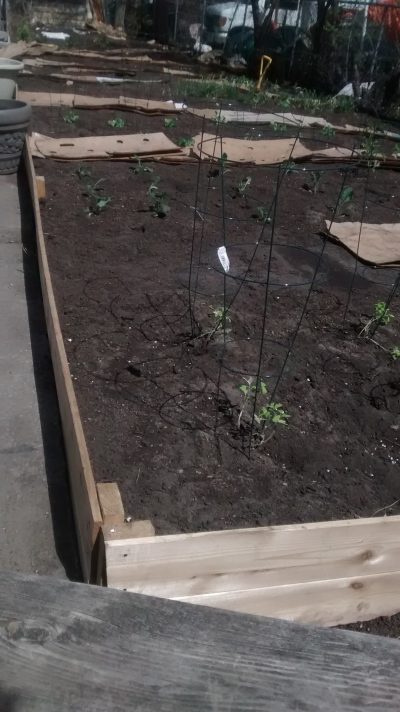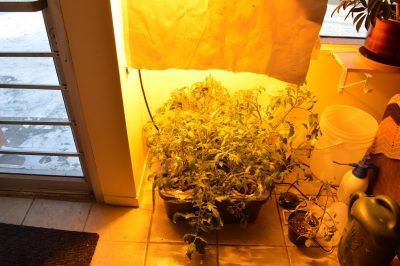by Omar Elsharkawy, CFICE Admin RA
We have to part ways with the warm weather at some point. Usually by November at the latest, plants will die off and we will have to wait until April to start growing our favorite fruits, vegetables, and herbs outside again. But just because our crops aren’t growing outdoors during the winter doesn’t mean we can’t continue to enjoy the fruits of our labour. Through some careful planning and effort, you can try out some of these food preservation and indoor growing techniques to continue enjoying your favourite food throughout the winter months.
Using Your Harvest
If you have too much produce come harvest season and you’re afraid it will go to waste, consider canning it. I usually collect my excess tomatoes at the end of harvest season and turn them into salsa to be canned. This summer, I’ll be learning to can dill pickles! Canning is fairly easy to learn, however, it’s recommended you learn from a professional because a bad canning job can lead to botulism, a particularly nasty form of food poisoning. Often, food co-ops and community centers will offer canning workshops. In Ottawa, Just Food offers canning workshops, and in Toronto, the West End Food Co-op hosts a number of different workshops on storing food for the winter. Your community probably offers them too. Just try Googling “canning workshop” and some results are sure to pop up.
Don’t want to can your excess produce? Why not donate it instead? Some food banks will accept fresh produce donations, but be sure to call and ask ahead of time. You could also share your produce with friends and family, and potentially partake in the delicious delicacies they create. If you have some fruit or nut trees and aren’t particularly interested in the work of harvesting all your excess produce, consider calling up an organization like Hidden Harvest Ottawa. During the summer and fall, they organize harvest events where they send volunteers to collect your excess bounty. They then divide the harvest four ways, with 1/4 each going to the nearest food agency, the homeowner, the volunteer harvesters, and Hidden Harvest Ottawa.
Extending the Growing Season
The most common and easiest technique for extending the growing season into the winter is to simply move your plants, or start new plants, indoors in big pots. The key to success for indoor planting is to choose plants that do not need much space, sunlight, or high temperatures to grow. “Windowsill” tomatoes are ones that can grow indoors and typically do not need as much sunlight. Some herbs also do really well indoors. Due to the short days in winter, it is recommended that you purchase a grow light for best results. Make sure to get an energy efficient grow light since sometimes they use a lot of energy, which isn’t exactly environmentally friendly. If used excessively or incorrectly, grow lights could also increase your energy bill to the point where growing your own vegetables to save money on groceries is no longer economically sustainable.
Another technique for indoor gardening that is rising in popularity is hydroponics. Hydroponic systems are systems that rely only on water, nutrients, and light (usually artificial light in winter) instead of using soil. Hydroponic systems are great when you are planning to grow a large amount of plants. A growing trend nowadays is for people to convert their basements into a space that houses hydroponic systems. This video provides a great step by step guide on starting a hydroponic system. IKEA has also put out a video on indoor hydroponics.
Whether you’re planning to make the most of your summer gardening efforts, or hoping to extend your growing season, garden supplies are easiest to find in the spring. So be sure to purchase all the equipment you’ll need now to save yourself the stress and expense of trying to find the proper equipment in the fall.
Happy gardening!
This piece is part of CFICE’s 4-part series on community gardening.
Additional Resources:
A Video on Canning Salsa
https://www.youtube.com/watch?v=-rWsmxYa2Ws
A wiki on growing tomatoes indoors
http://www.wikihow.com/Grow-Tomatoes-Indoors

